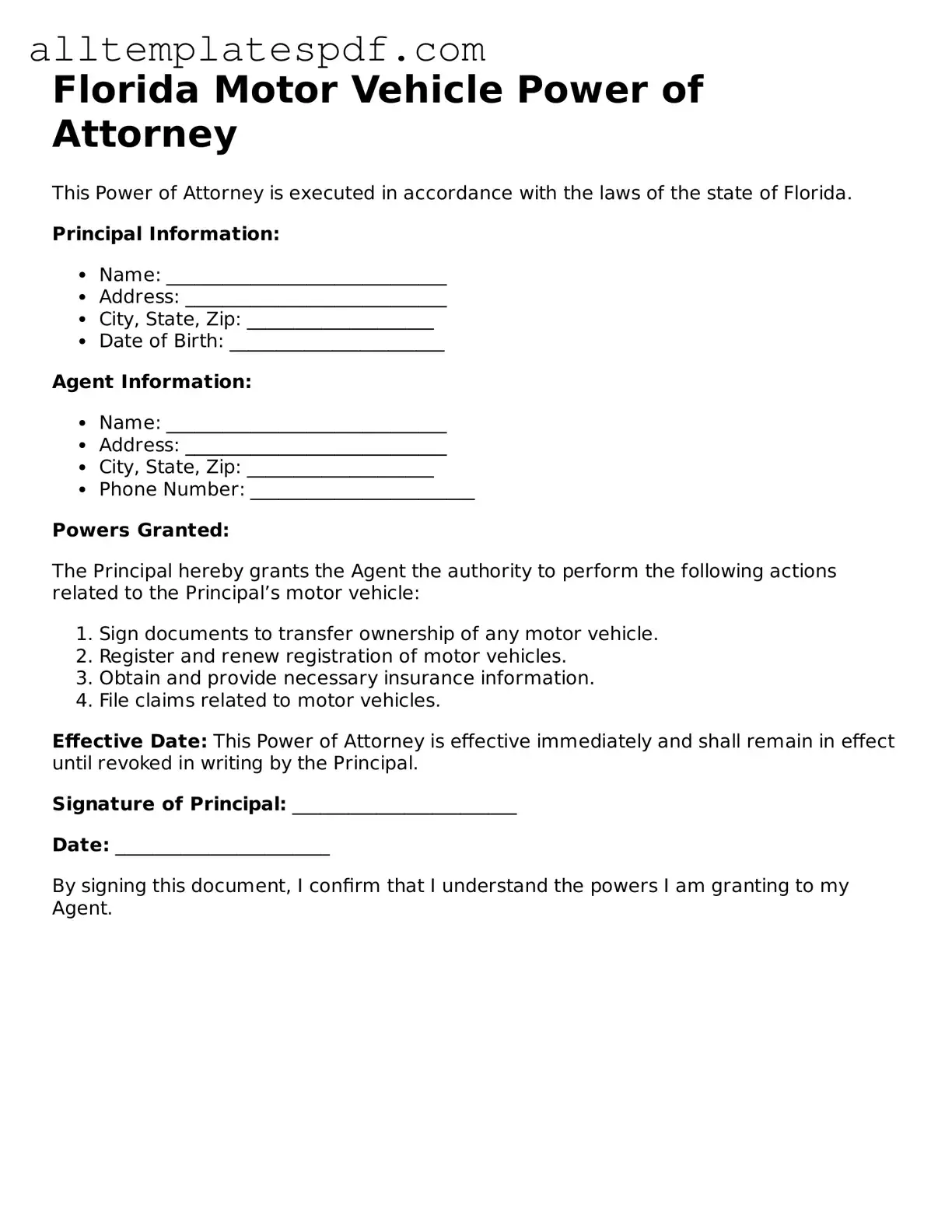Filling out the Florida Motor Vehicle Power of Attorney form can seem straightforward, but many people make common mistakes that can lead to complications. One frequent error is not providing complete information about the principal and the agent. It’s crucial to include full names, addresses, and contact information. Missing even one detail can render the document invalid.
Another mistake is failing to sign and date the form correctly. The principal must sign the document in the presence of a notary public. If this step is overlooked, the power of attorney may not be recognized by the Department of Highway Safety and Motor Vehicles.
Some individuals forget to specify the powers granted to the agent. The form should clearly outline what the agent is allowed to do on behalf of the principal. Without this clarity, the agent may not have the authority needed to complete necessary transactions.
People often neglect to update the form when there are changes in circumstances. If the principal's situation changes—such as a change of address or a new agent—it's essential to fill out a new form. Relying on an outdated document can create legal issues.
Another common oversight is not discussing the arrangement with the agent beforehand. It's important for both parties to understand their roles and responsibilities. Miscommunication can lead to confusion and disputes later on.
Some individuals might also forget to keep copies of the completed form. Having a copy is vital for both the principal and the agent. This ensures that both parties have access to the document and can refer to it when needed.
Finally, many people do not consider the implications of granting power of attorney. It’s essential to understand the level of trust required in this arrangement. The principal should carefully consider whether they are comfortable giving someone else the authority to act on their behalf.
